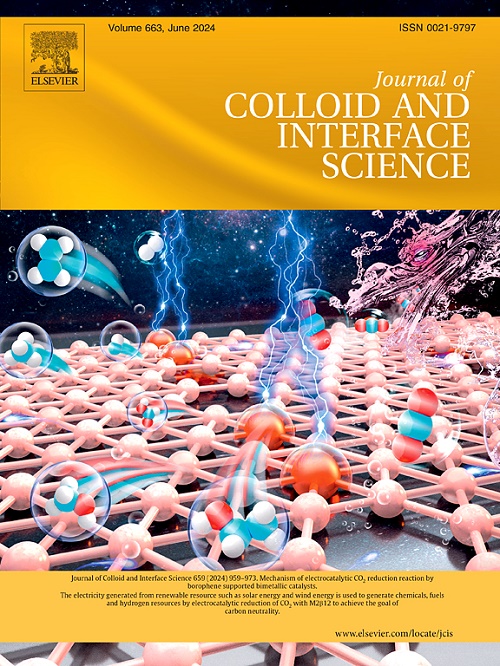cts基碳纳米复合材料电极增强超级电容器性能的电化学研究。
IF 9.7
1区 化学
Q1 CHEMISTRY, PHYSICAL
引用次数: 0
摘要
最新的评估强调,由于有限的能源供应和对环境的担忧,迫切需要有效的能源储存系统。本文研究了用水热法制备Cu2ZnSnS4 (CZTS)/功能化多壁碳纳米管(f-MWCNT)复合材料。我们分析了纳米复合材料(CZTS (10), CZTS(20)和CZTS(40))的物理和化学特性,这些材料分别由10%,20%和40%重量的f- mcnt生产,作为超级电容器可能的电极。本文首次研究了在这种特殊情况下CZTS/f-MWCNT纳米复合材料的电化学性能。电化学测量显示出相当大的性能提高,特别是对于CZTS(20)样品,在6 M KOH水溶液中,扫描速率为5 mV/s时,其比电容达到171F/g。即使在提高扫描速率的情况下,电容仍然保持在94F/g,表现出很强的速率能力。经过3000次循环后,纳米复合材料保留了99%的原始容量。这些结果表明,f-MWCNT优异的导电性和较大的表面积大大降低了电荷转移和离子扩散阻力,提高了纳米复合材料的电容性能。CZTS/f-MWCNT纳米复合材料在能量存储和转换器件中具有重要的应用前景。本文章由计算机程序翻译,如有差异,请以英文原文为准。

Enhanced supercapacitor performance with CZTS-based carbon nanocomposites electrodes: An electrochemical study
The latest assessments emphasize the pressing need for effective energy storage systems as a result of limited energy availability and environmental apprehensions. This work investigates the production of a new composite material, Cu2ZnSnS4 (CZTS)/functionalized-Multi-walled Carbon Nanotube (f-MWCNT), using a hydrothermal method. We analyze the physical and chemical characteristics of nanocomposite materials (CZTS (10), CZTS (20), and CZTS (40)) produced with 10 %, 20 %, and 40 % f-MWCNT by weight, respectively, as possible electrodes for supercapacitors. This work is the first to investigate the electrochemical properties of CZTS/f-MWCNT nanocomposites in this specific situation.Electrochemical measurements demonstrated considerable performance increases, notably for the CZTS (20) sample, which achieved a specific capacitance of 171F/g at a scan rate of 5 mV/s in a 6 M KOH aqueous electrolyte. Even at increased scan rates, the capacitance remained high at 94F/g, exhibiting strong rate capability. After 3000 cycles, the nanocomposite preserved 99 % of its original capacity. These findings imply that the excellent conductivity and large surface area of f-MWCNT greatly decrease charge transfer and ion diffusion resistance, boosting the nanocomposite’s capacitance performance. The CZTS/f-MWCNT nanocomposite has significant promise for use in energy storage and conversion devices.
求助全文
通过发布文献求助,成功后即可免费获取论文全文。
去求助
来源期刊
CiteScore
16.10
自引率
7.10%
发文量
2568
审稿时长
2 months
期刊介绍:
The Journal of Colloid and Interface Science publishes original research findings on the fundamental principles of colloid and interface science, as well as innovative applications in various fields. The criteria for publication include impact, quality, novelty, and originality.
Emphasis:
The journal emphasizes fundamental scientific innovation within the following categories:
A.Colloidal Materials and Nanomaterials
B.Soft Colloidal and Self-Assembly Systems
C.Adsorption, Catalysis, and Electrochemistry
D.Interfacial Processes, Capillarity, and Wetting
E.Biomaterials and Nanomedicine
F.Energy Conversion and Storage, and Environmental Technologies

 求助内容:
求助内容: 应助结果提醒方式:
应助结果提醒方式:


